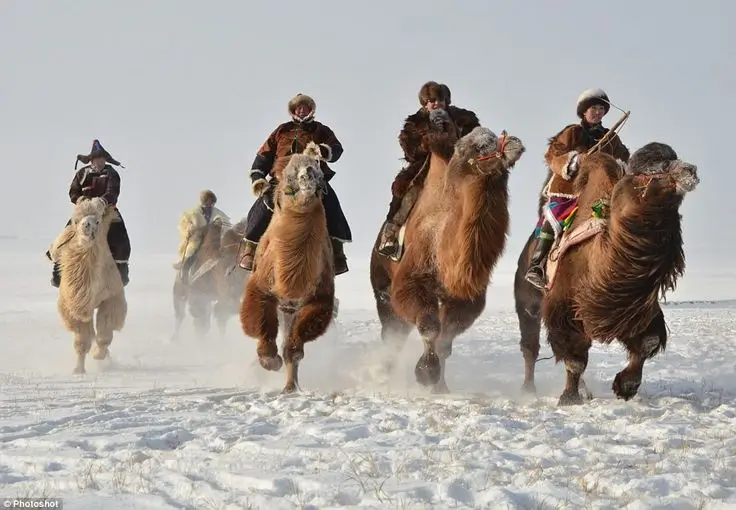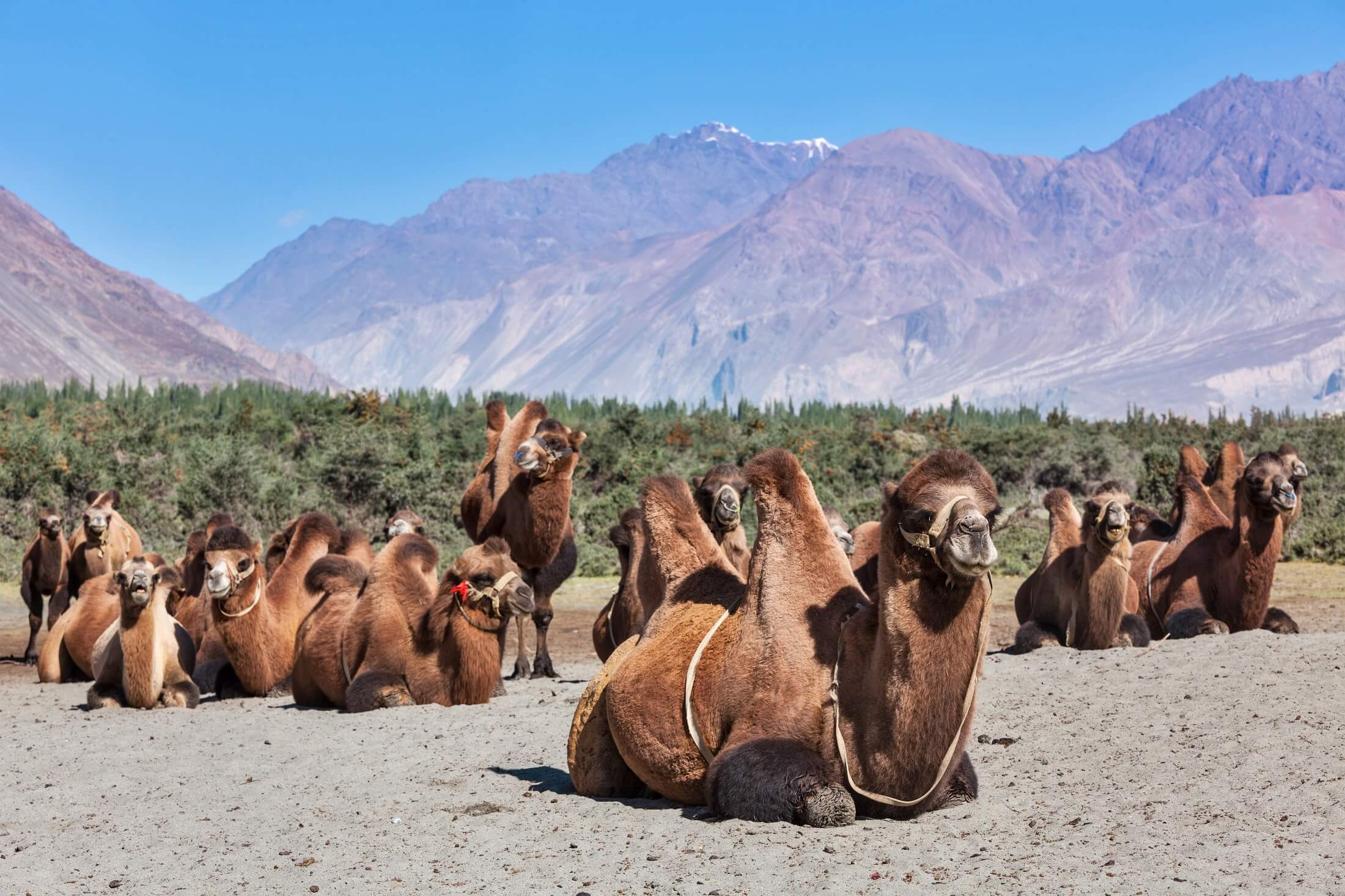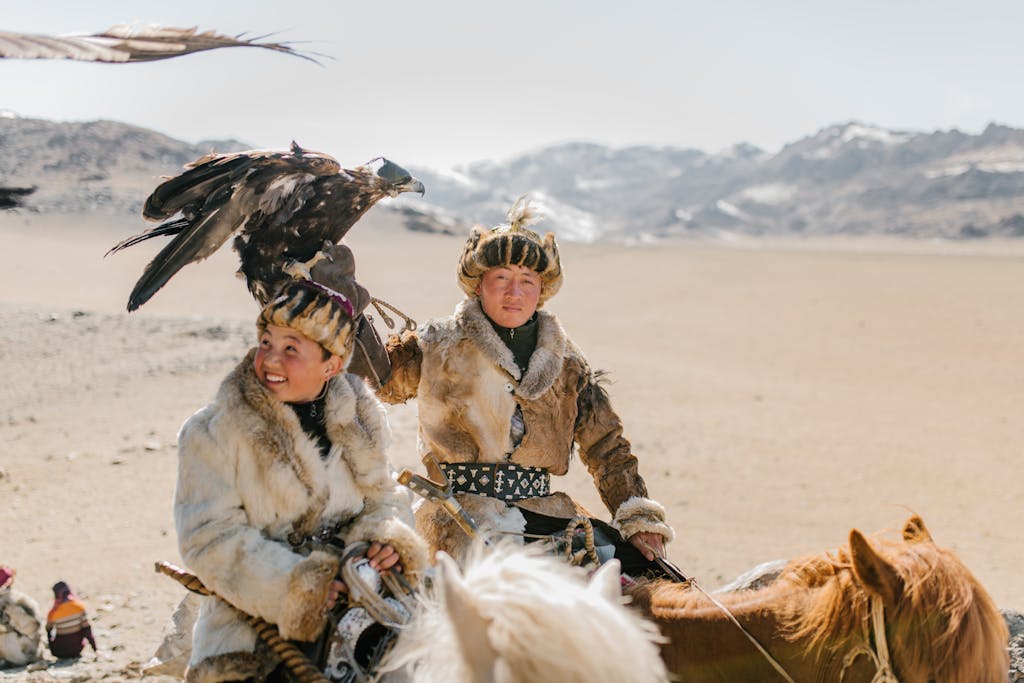Mongolian Camel Racing Festival
Introduction to the Event
The Thousand Camel Festival is one of Mongolia’s most captivating cultural events, held each year in the heart of the Gobi Desert. This vibrant camel festival is dedicated to celebrating the heritage of Mongolian camel herders and their iconic Bactrian camels.
Organized with the goal of protecting and revitalizing the Bactrian camel population, which has faced decline in recent years, the festival is a rare opportunity for both locals and tourists to immerse themselves in the unique traditions of the Gobi.
Visitors to the Thousand Camel Festival can witness thrilling camel races, fast-paced camel polo matches, and a variety of other competitions that showcase the skills of both camels and their herders.

The event is a lively gathering, filled with traditional music, dance performances, and authentic Mongolian cuisine, offering a true taste of nomadic life. For travelers seeking to interact with Mongolian camel herders and experience the world of two-humped camels up close, the festival is an unmissable highlight on any tour itinerary.
Over the years, the Thousand Camel Festival has become a symbol of community pride and a testament to the enduring bond between the people of Mongolia and their camels.two humps, as opposed to the dromedary camels with a single hump used in the Middle East.
Mongolian Camel Racing Festival
Mongolian camel racing differs significantly from the camel racing seen in Middle Eastern countries. The races feature Mongolian camels, specifically the resilient two humped bactrian camels, which are well adapted to the cold and snow of the Gobi Desert, as well as the extreme heat of summer.
These camels are essential to the nomads of the region, who have a deep cultural connection with their herds, showcasing the vital role of camel herders in this traditional lifestyle .
During the festival, visitors can experience riding a camel or even take a ride after the races, highlighting the traditional practice of camel riding in Mongolia. Ongoing efforts aim to protect Mongolian camels and support the nomadic way of life, ensuring the preservation of these unique animals and their cultural significance.

Camel Herders and their Camels
Mongolian camel herders are renowned for their deep connection with their Bactrian camels, animals that are central to their way of life in the Gobi Desert. These two-humped camels are much more than just livestock—they provide essential resources such as milk, wool, and reliable transportation across the vast, challenging landscape.
The daily life of a camel herder revolves around caring for their camels, from feeding and grooming to training them for the demanding camel races and other competitions featured at the festival, including the production of dairy products .
For Mongolian camel herders, camels are a source of pride and prosperity, often regarded as the “ships of the desert” for their ability to endure harsh conditions and carry heavy loads. The festival is a celebration of this unique relationship, where herders demonstrate their expertise and the strong bond they share with their camels.
Whether preparing for a race or showcasing the finest wool and dairy products, the herders’ dedication to their camels is evident in every aspect of their lives, making the festival a heartfelt tribute to this enduring partnership.

Key Takeaways
- Mongolian camel racing / races can cover up to 30 kilometers and feature two humped Bactrian camels, also known as Mongolian camels.
- The races are culturally significant and rooted in Mongolia’s nomadic traditions, highlighting the unique breed characteristics and cultural importance of Mongolian camels.
- Young riders typically participate, emphasizing community and familial involvement.
In Mongolia, the races are often longer, sometimes covering distances up to 30 kilometers (about 18.6 miles), and involve Bactrian camels, which are two humped Bactrian camels, commonly referred to as Mongolian camels. These camels are celebrated for their hardy nature and adaptability to Mongolia’s cold climate.
The participants in Mongolian camel racing are usually young riders, similar to the tradition in horse racing.
The event is less commercialized than in other countries and is deeply rooted in the nomadic culture and traditions of Mongolia.
It’s a celebration of the camel festival, showcasing camel’s role in Mongolian nomadic life, highlighting their endurance and importance in the harsh desert environment. The festival also supports efforts to protect and reproduce two humped Bactrian camels, and promotes the cultural significance of Mongolian camels through racing traditions.



Cultural Significance
In Mongolia, camels have been integral to the nomadic lifestyle for centuries, providing transportation, wool, and milk, among other necessities. Mongolian Camel racing is an important tradition among Mongolian nomads, who have relied on Mongolian camels for generations due to their hardiness and adaptability to the harsh climate.
Mongolian Camel racing is a celebration of these enduring animals and their vital role in Mongolian life. Unlike in many parts of the world where camel racing has become a professional sport, in Mongolia, it remains deeply entwined with tradition and community values.
The Naadam Festival, often referred to as the “Eriin Gurvan Naadam,” meaning “Three manly games,” is the most prominent example of this tradition.
Although horse racing, wrestling, and archery are the primary sports, Mongolian camel racing has gained popularity and become a fixture at many local Naadam celebrations throughout Mongolia, particularly in the Gobi Desert region, where camels are more prevalent. The festival helps protect both the Mongolian camel population and the nomadic way of life, while also promoting tourism and raising awareness of these unique cultural traditions through various competitions .
Organization of Camel Races
Camel races in Mongolia are typically organized as part of local festivals and celebrations, with the most significant races occurring during the Naadam Festival.
These races can vary in length, usually ranging from 15 to 30 kilometers (approximately 9 to 18 miles), which is significantly longer than the sprint distances seen in Middle Eastern camel races.
The races are open to Bactrian camels of various ages, with different categories for young and older animals.
The camels are ridden by children and teenagers, who are light enough not to overburden the camels but skilled enough to navigate the long-distance races. Many children and teenagers take their first ride on a camel during the festival, learning the traditional art of riding from a young age.
This aspect of the race underscores the community and familial aspects of the sport, as families work together to train both the camels and their young riders for the competition.
The race course may follow a road or a marked path across the desert, adding to the challenge and excitement of the event.


Training and Preparation
Training for a camel race in Mongolia is a long-term commitment, often beginning months in advance of the event.
Camels are trained to increase their stamina and speed across the vast and varied terrain they will encounter during the race.
The bond between the camel and its young rider is also crucial, as trust and understanding between the animal and the human can significantly affect performance. Both camels and riders practice riding together regularly to build trust and improve their coordination. Practice rides are an essential part of the preparation process.
On the day of the race, the excitement and anticipation fill the air. Spectators from across Mongolia, many of whom are nomadic herders, gather to watch the event, setting up traditional gers (yurts) and sharing in communal feasts. Lunch is often shared among participants and visitors during the festival, fostering a sense of community. For those staying at the event, overnight accommodation options such as local hotels or ger camps are available, providing a comfortable place to rest after a day of festivities.
The event is as much a social gathering as it is a sporting competition, with people dressed in their finest traditional attire, enjoying music, dance, and the company of friends and family. Visitors can also enjoy exhibitions of local art or crafts, including paintings created by children, which add to the cultural richness of the festival.
As the race begins, the camels are released across the open steppe, a testament to Mongolia’s vast and untamed landscapes. The cold and snow often characterize the festival environment, highlighting the resilience of both the camels and the participants. After the race, an awards ceremony is held where winners are recognized and receive prizes, celebrating their achievements.
The sight of these majestic animals, guided by their young riders, racing across the horizon is a powerful reminder of Mongolia’s deep connection to its nomadic past. Many visitors undertake a memorable trip to reach the festival, experiencing the unique traditions and hospitality of the region.
Beyond the Race
Beyond the excitement of the race itself, camel racing in Mongolia serves as a reminder of the importance of preserving cultural traditions and the natural environment.
Ongoing efforts to protect two humped bactrian camels are closely linked with supporting sustainable tourism that benefits local communities. These initiatives help conserve the species, promote awareness, and showcase nomadic heritage to visitors.
It brings attention to the unique relationship between the people of Mongolia and their animals, as well as the skills and knowledge passed down through generations that allow both to thrive in challenging environments.






























